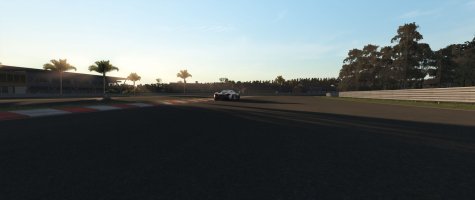Could anyone who is familiar with building instruments and animations with Blender help a lost one out please?
Since about a week I am stubbornly trying to figure out how to build working instruments with Blender v2.8.
Too keep it simply I am just trying to build a tachometer for now.
I have my mesh sorted and have the proper dummies in place (big thanks to @AccAkut for sharing your empty dummy Blender project - that was massive help for a beginner in Blender!).
Issue #1:
- whenever I assign a parent (ARROW_RPM) to a child (NEEDLE_RPM) my carefully aligned child object will flip into space and has its carefully aligned position in the tachometer gauge smashed to pieces
I have not the slightest idea how to fix this and could only find hints that this may be buggy behavior of Blender not keeping object position persistent when parenting a child - is there any solution to this?
Issue #2:
- sometimes (all the time ???) when exporting the Blender project to FBX (with my painstakingly aligned instrument dummies and objects that I have built with hours of work, sweating, bleeding, cursing ...) the FBX export will mess up object position and orientation of the child and orientation of the dummy completely.
The result is a tach needle that points in all kinds of directions just not the one I saw on the screen in Blender after aligning it !@#$%
... also the Blender UI is a punch in the dick.
Since about a week I am stubbornly trying to figure out how to build working instruments with Blender v2.8.
Too keep it simply I am just trying to build a tachometer for now.
I have my mesh sorted and have the proper dummies in place (big thanks to @AccAkut for sharing your empty dummy Blender project - that was massive help for a beginner in Blender!).
Issue #1:
- whenever I assign a parent (ARROW_RPM) to a child (NEEDLE_RPM) my carefully aligned child object will flip into space and has its carefully aligned position in the tachometer gauge smashed to pieces
I have not the slightest idea how to fix this and could only find hints that this may be buggy behavior of Blender not keeping object position persistent when parenting a child - is there any solution to this?
Issue #2:
- sometimes (all the time ???) when exporting the Blender project to FBX (with my painstakingly aligned instrument dummies and objects that I have built with hours of work, sweating, bleeding, cursing ...) the FBX export will mess up object position and orientation of the child and orientation of the dummy completely.
The result is a tach needle that points in all kinds of directions just not the one I saw on the screen in Blender after aligning it !@#$%
... also the Blender UI is a punch in the dick.













